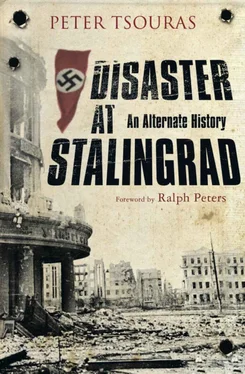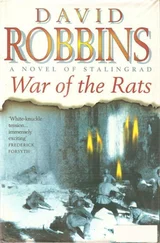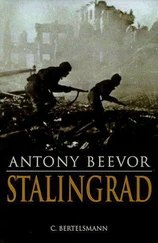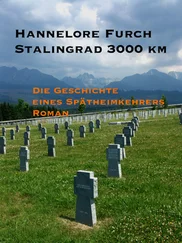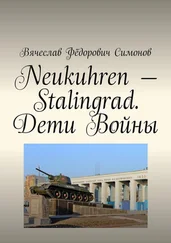Introduction, ‘The Dancing Floor of War’
1 Edward R. Stettinius, Jr., Lend-Lease: Weapon for Victory (New York: Macmillan, 1944), pp. 208, 215.
2 T. H. Vail Motter, The Persian Corridor and Aid to Russia (Washington, DC: Center for Military History, 2000), p. 4.
3 ‘Khrushchev Remembers’, The Glasnost Tapes, 1990.
4 Homer, The Iliad, tr. Robert Fagles (New York: Penguin, 1990) p. 16.1001-5.
5 William Craig, Enemy at the Gates: The Battle for Stalingrad (New York: Penguin, 2001), p. xi.
Chapter 1, Führer Directive 41
1 Paul Carell, Hitler Moves East 1941-1943 (New York: Bantam Books, 1967), p. 479.
2 Joel Hayward, ‘Too Little Too Late: An Analysis of Hitler’s Failure in 1942 to Damage Soviet Oil Production’, Journal of Strategic Studies, Vol. 18, No. 4, 1995, p. 2.
3 Carell, Hitler Moves East, pp. 479-80.
4 http://wikipedia.org/wiki/Stavka, accessed 7 June 2012. ‘Stavka was the term used to refer to a command element of the armed forces from the time of the Kievan Rus.’
5 Geoffey Jukes, Stalingrad to Kursk (Barnsley: Pen & Sword, 2011), pp. 78-9.
6 Carell, Hitler Moves East, p. 480.
7 Anthony Beevor, Stalingrad (New York: Penguin, 1999), pp. 69-70.
8 ‘Annex 5 to Report by the C-in-C, Navy, to the Führer, 13 April 1942’, in 3 Fuehrer Conferences on Matters Dealing with the German Navy 1942, Office of Naval Intelligence, Washington, DC, 1946, pp. 65-6.
9 *Aaron T. Davis, Hitler and Directive 41: Decisive Decisions of World War II (Los Angeles: Ronald Reagan Center for Strategic Issues, 2004), p. 82.
10 Vail Motter, The Persian Corridor and Aid to Russia, Appendix, Tables 2, 7, 10.
11 Zehra Onder, Die tiirkische Aussenpolitik im Zweiten Weltkrieg (Munich, 1977) p. 150.
12 John Gill, ‘Into the Caucasus: The Turkish Attack on Russia in 1942’, in Peter G. Tsouras, ed., Third Reich Victorious (London: Greenhill, 2002), p. 149.
13 Gill, ‘Into the Caucasus’. pp. 149-50.
14 *Franz Baron von Oldendorf, ‘Hitler’s Grand Turkish Gesture’, Journal of Second World War Studies, Vol. XXII, p. 832.
15 Adolf Hitler, Hitler’s Table Talk, 1941-1944, ed. H. R. Trevor-Roper (New York: Enigma Books, 2000), pp. 554-5.
16 Mathew Hughes & Chris Mann, Inside Hitler’s Germany: Life Under the Third Reich (New York: MJF Books, 2000), p. 184.
17 *Ivan Chonkin, The Life of Andrey Vlasov: Patriot and Liberator (New York: Hudson Press, 1982), pp. 119-22.
18 *Ibrahim Sayyid, Nazi Propaganda in the Muslim World (New York: International Press, 1987), pp. 121-23. Nazi propaganda was finding a receptive audience, especially in the Arab world which was becoming more and more agitated by the increasing Jewish settlement in the British Mandate of Palestine.
19 Gill, ‘Into the Caucasus’, p. 149.
20 Vozhd is a Russian term that means great war leader. In the movie Enemy at the Gates, the English wording used by the character representing Khrushchev to convey the emotional meaning of the term is ‘the boss’, with all the connotations of a Mob boss.
21 This figure of 2.5 million irrecoverable losses was provided by Russian military historians to the author in a symposium at the Moscow Military History Institute in July 1992.
22 This statement was made by Russian military historians to the author in a symposium at the Moscow Military History Institute in July 1992.
23 Richard Woodman, Arctic Convoys 1941-1945 (Barnsley: Pen & Sword, 2011), pp. 13-14.
24 Woodman, Arctic Convoys, p. 14.
25 Albert L. Weeks, Russia’s Life-Saver: Lend-Lease Aid to the USSR in World War II (Lanham, MD: Lexington Books, 2010), p. 142.
26 Alyona Sokolova, ‘American Aid to the Soviet Union’, Vladivostok News, 17 April 2005, www.freerepublic.com/focus/f-news/1385548/posts, accessed 15 February 2012.
27 Beevor, Stalingrad, p. 223.
28 Weeks, Russia’s Life-Saver, p. 122.
29 Weeks, Russia’s Life-Saver, p. 43.
30 Woodman, Arctic Convoys, p. 345.
Chapter 2, A Timely Death
1 Grossadmiral (Grand Admiral) was the German naval rank equivalent of a British admiral of the fleet or a United States fleet admiral.
2 Under the Weimar Republic, the German Navy was called the Reichsmarine; Hitler renamed it the Kriegsmarine.
3 Peter G. Tsouras, The Book of Military Quotations (St Paul: Zenith, 2005), p. 396.
4 German Naval History, www.german-navy.de, accessed 17 April 2012.
5 Erich Raeder, Grand Admiral (New York: Da Capo, 2001), p. 374.
6 David Irving, The Destruction of Convoy PQ-17 (New York: Simon et Schuster, 1968), pp. 4, 10.
7 Woodman, Arctic Convoys, p. 65.
8 Alan E. Steinweiss and Daniel E. Rogers, The Impact of Nazism: New Perspectives on the Third Reich and its Legacy (Lincoln: University of Nebraska, 2003), pp. 186-8.
9 Raeder, Grand Admiral, pp. 255-65.
10 Jägers were elite light infantry trained to operate in difficult terrain.
11 Tsouras, Book of Military Quotations, p. 229.
12 Vasili Ivanovich Chuikov, The Battle for Stalingrad (New York: Holt, Rinehart and Winston, 1964), p. 14.
13 Michael K. Jones, Stalingrad (Barnsley: Pen Ɛt Sword, 2007), p. 76.
14 http://en.wikipedia.org/wiki/Henning_von_Tresckow.
15 Peter Hoffmann, The History of German Resistance 1933-1945 (Macdonald and Janes, 1977), p. 265
16 Peter Hoffmann, Stauffenberg: A Family History 1905-1944 (Montreal: McGill-Queen’s University, 2008), pp. 163, 168.
17 Peter Hoffmann, Carl Goerdeler and the Jewish Question, 1933-1942 (Cambridge: Cambridge University Press, 2011), p. 115.
18 *Friedrich von Heinzen, Hoch! Hoch! Dreimal Hoch! Ludwig I, Ein Leben (Frankfurt: Rolf Martin, 1996), p. 109.
19 Hugh Sebag-Montefiore, Enigma: The Battle for the Code (New York: John Wiley, 2000), p. 218.
20 http://wikipedia.org/wiki/Enigma_machine, accessed 18 February 2012. ‘Enigma was the codename for a system of electro-mechanical rotor cipher machines used for the encryption and decryption of secret messages. Although Enigma had some cryptographic weaknesses, in practice it was only in combination with procedural flaws, operator mistakes, captured key tables and hardware, that Allied cryptanalysts were able to be so successful.’
21 Sebag-Montefiore, Enigma, p. 218.
22 Irving, The Destruction of PQ-17, p. 1.
23 Winston Churchill, The Second World War (New York: Penguin, 1985), Vol. IV, p. 98.
24 Raeder, Grand Admiral, p. 359.
25 www.german-navy.de/kriegsmarine/ships/destroyer/zerstorer1936a/z24/history.html, accessed 21 Feb 2012. Destroyer Flotilla 8 consisted of Z-24, Z-25 and Hermann Schoemann.
26 Horvitz, Leslie Alan; Catherwood, Christopher, Encyclopedia of War Crimes and Genocide (New York: Facts On File, 2006), p. 200; Bryant, Chad Carl, Prague in Black: Nazi Rule and Czech Nationalism (Cambridge, MA: Harvard University, 2007), p. 140.
Chapter 3, The Second Wannsee Conference
1 Chuikov, The Battle for Stalingrad, p. 14.
2 Carell, Hitler Moves East, p. 483.
3 With the annexation of Austria to the Reich, its army of eight divisions was incorporated directly into the German Army bringing with them the lineages and traditions of the old Imperial Austrian Army.
Читать дальше
